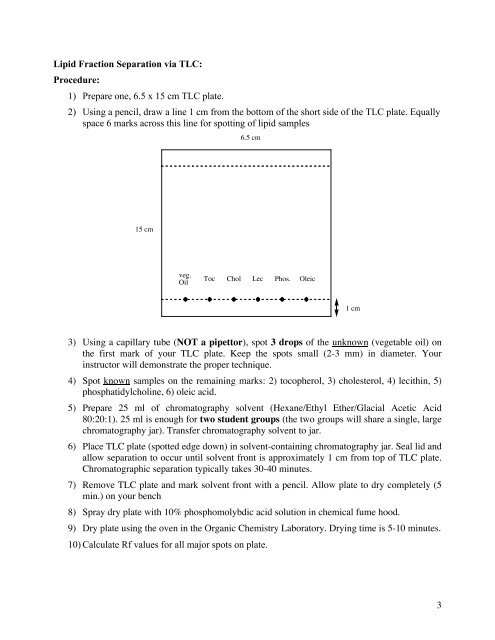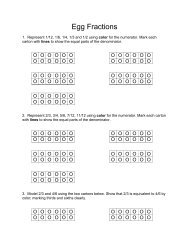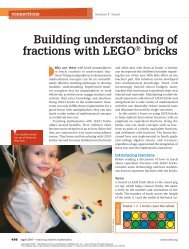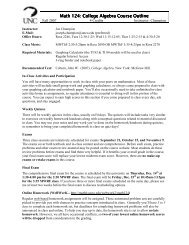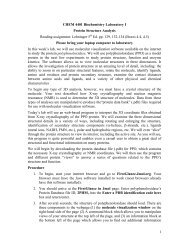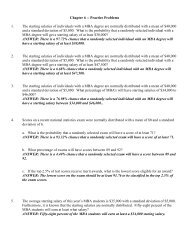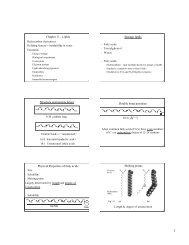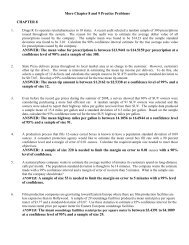Biochemistry I Laboratory
Biochemistry I Laboratory
Biochemistry I Laboratory
Create successful ePaper yourself
Turn your PDF publications into a flip-book with our unique Google optimized e-Paper software.
Lipid Fraction Separation via TLC:Procedure:1) Prepare one, 6.5 x 15 cm TLC plate.2) Using a pencil, draw a line 1 cm from the bottom of the short side of the TLC plate. Equallyspace 6 marks across this line for spotting of lipid samples6.5 cm15 cmveg.OilToc Chol Lec Phos. Oleic1 cm3) Using a capillary tube (NOT a pipettor), spot 3 drops of the unknown (vegetable oil) onthe first mark of your TLC plate. Keep the spots small (2-3 mm) in diameter. Yourinstructor will demonstrate the proper technique.4) Spot known samples on the remaining marks: 2) tocopherol, 3) cholesterol, 4) lecithin, 5)phosphatidylcholine, 6) oleic acid.5) Prepare 25 ml of chromatography solvent (Hexane/Ethyl Ether/Glacial Acetic Acid80:20:1). 25 ml is enough for two student groups (the two groups will share a single, largechromatography jar). Transfer chromatography solvent to jar.6) Place TLC plate (spotted edge down) in solvent-containing chromatography jar. Seal lid andallow separation to occur until solvent front is approximately 1 cm from top of TLC plate.Chromatographic separation typically takes 30-40 minutes.7) Remove TLC plate and mark solvent front with a pencil. Allow plate to dry completely (5min.) on your bench8) Spray dry plate with 10% phosphomolybdic acid solution in chemical fume hood.9) Dry plate using the oven in the Organic Chemistry <strong>Laboratory</strong>. Drying time is 5-10 minutes.10) Calculate Rf values for all major spots on plate.3


